Text
Week 10: Digital Citizenship, Conflict and Social Media Governance – Gaslighting & Gamergate

It comes to no surprise that social media is a multifaceted tool. As discussed in previous weeks, social media has the power to create and maintain digital communities, and you reading this right now likely means that you are part of an online community yourself. However, where there are positives, there are often negatives; this is no different for social media. The online world often fosters conflict, with ‘gaslighting’ becoming a common practise. But what exactly is gaslighting?
Gaslighting got its name from the 1944 film Gaslight, where the wife is deliberately and gradually manipulated by her husband into believing that she is insane. He does this by sneaking off and causing the lights to flicker and dim, all whilst denying this knowledge and leading his wife to question her sanity (Gleeson 2018). Although, it is not always deliberate, gaslighting is often used as a method of power and control and is becoming a commonly used term in society, both online and offline. Although, the word carries negative connotations, “it signifies a deeper understanding of what abuse looks like and the many forms it can take” (Gleeson 2018).
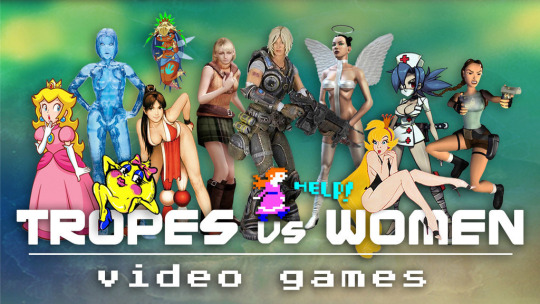


Following the theme of social media conflict and governance is the protracted online controversy known as Gamergate. Referred to as an “internet culture war” (Dewey 2014), Gamergate sparked a heated debate. On one side were independent game creators and critics, many being women, who advocate for greater inclusion in gaming; with the other side consisting of misogynist, anti-feminist trolls who refuse to have their games changed (Dewey 2014). Many of the men’s rights activists and anti-feminists used “network harassment, such as doxing (publishing personal information online), revenge porn (spreading intimate photos beyond their origins), social shaming and intimidation” (Marwick and Caplan, 2018), with gamers including Zoe Quinn, Anita Sarkeesian and many others falling victim to this.
Today, the “justice system continues to be slow to understand the link between online harassment and real-life violence. There are more laws about online harassment now and more prosecutions, but police are often untrained and undereducated…[leaving people] unsatisfied with the [legal] response” (Romano 2021).
Although, there are laws in place such as the Criminal Code Act 1995 and the Enhancing Online Safety Act 2015, more needs to be done about police officers and society becoming more familiar with the severity of violence and harassment online. If we don’t start becoming better digital citizens now, what will our future look like?
References:
Dewey, C 2014, “The only guide to Gamergate you will ever need to read,” Washington Post, The Washington Post, viewed 12 May, 2021, <https://www.washingtonpost.com/news/the-intersect/wp/2014/10/14/the-only-guide-to-gamergate-you-will-ever-need-to-read/>.
Gleeson, J 2018, “Explainer: what does ‘gaslighting’ mean?,” The Conversation, viewed 12 May, 2021, <https://theconversation.com/explainer-what-does-gaslighting-mean-107888>.
Marwick, A.E, & Caplan, R 2018, Drinking male tears: language, the manosphere, and networked harassment, Feminist Media Studies, 18:4, 543-559.
Romano, A 2021, “What was Gamergate? The lessons we still haven’t learned,” Vox, viewed 12 May, 2021, <https://www.vox.com/culture/2020/1/20/20808875/gamergate-lessons-cultural-impact-changes-harassment-laws>.
#mda2000921#digitalcommunities#social media#gaslighting#violence#online harassment#cyberbullying#gamergate#online#digital citizenship
8 notes
·
View notes
Link
I watched 'The True Cost' documentary and was shocked and appalled when this Bangladeshi garment employee revealed that she and her supporters got violently beaten for speaking up about the unsafe working conditions of garment factory buildings.
I highly recommend watching this documentary to immerse yourself in what really goes on in the fashion industry. Haven't you ever wondered how some clothing can go on sale for even less than $5? If you're not paying the full price, someone is.
Exclusive clip of the film on TakePart.com!
27 notes
·
View notes
Text
I love how this post is worded and how it promotes the slow fashion movement. Thought it was a great post to add to my blog relating to this week's discussion on sustainable fashion!

Fast Fashion.
I am by no means an expert on the fashion industry, but I am here to help share the knowledge. Please feel free to comment your thoughts on how the fashion industry operates!
What is fast fashion?
Fast fashion is an industry that creates clothing with an expiration date. They create the style trends, so they know when something will fall out of vogue. The clothing is cheaply made, sold for cheap, and the workers who make it are paid even cheaper. The clothing is meant to be worn out, it is made with non-biodegradable materials such as polyester.
Stores like this are H&M, Target, Old Navy, Walmart, etc. There’s a reason the shirts are cute and cheap. Instead of having 4 fashion seasons a year, they have 52. They design their clothes to go out of style within the week, forcing the consumer to believe themselves to be out of the loop.
How do we combat fast fashion?
With Slow Fashion. Slow fashion shows itself in a variety of ways. One is with slow fashion shops, and the other is with thrifting.
There are a few slow fashion shops out there. These shops often make to order, so your shirt might take 3 weeks to come to your house, but it was being made especially for you. The workers making these clothes are paid a fair price and the clothing is often biodegradable, like linen. It is more expensive, much more expensive, but it is created to last.
Thrifting is my favorite option, because there is so much variety and it’s often low cost. Thrifting is considered slow fashion even when you may have clothing from fast fashion stores in your thrift shop because by buying from a thrift shop, you are no longer contributing to the chain of consumerism and you are REUSING. Remember! Reuse is the second R is our 3 R’s! You don’t have to go to a thrift shop to thrift. Try a yard sale!
This is the biggest one of all: Use what you have. Wear it out. Wear it a new way. Make a skirt out of a scarf and tie a button up over a dress. There are so many combinations for how you can wear the clothes you already own so long as you get a little creative!
In a similar vein to thrifting, try hand me downs from friends and family to find your clothes. My mom and I are close and we often swap clothes. I have friends who have a shared closet.
I hope this helps! I will work on making a post dedicated to thrifting; what to look for, what to buy, and how to get over any germaphobe anxieties that may get in your way!!
160 notes
·
View notes
Text
Week 9: The Slow Fashion Movement



The issue of fast fashion, involving cheaply and rapidly made, trendy pieces, generates a controversial discussion with both producers and consumers, with many believing that it is time for the fashion industry to slow down. The slow fashion movement (also referred to as ‘eco fashion’ or ‘sustainable fashion’) provides an alternative by providing “goods and services that respond to basic needs and bring a better quality of life, while minimising the use of natural resources, toxic materials and emissions of waste and pollutants over the life-cycle, so as not to jeopardize the needs of future generations” (IISD 2015, cited in Z. Lai et al, 2017). Whether you actively consume fashion or not, I believe that it is crucial to be mindful of what goes on behind the scenes in the fashion industry and this is why we will be discussing our focus on these two main points: Why is sustainable fashion so important and what guiding principles can we use ourselves, to classify fashion lines as ‘sustainable’?
To answer the big question: Why is sustainable fashion so important? Using an environmental approach, the global fashion industry accounts for “10% of annual global carbon emissions, more than all international flights and maritime shipping combined” (World Bank, 2019) and fast fashion creates alarming levels of pollution, landfill waste and endangered threats to wildlife. If this isn’t eye-opening enough, fast fashion also violates fair working conditions, where workers, sometimes even underage children, are exploited long working hours in poor safety and health conditions for below minimum wage. By making the switch to more ethical and sustainable brands, you can proudly invest in your style, whilst confidently being part of preserving the ecosystem’s balance and supporting fair working rights. But you might be asking yourself, how do I know which brands are sustainable and which ones are worth purchasing from?
This introduces us to the four guiding principles that Fletcher (2008) highlights and that we can use to classify fashion lines as ‘sustainable’.
1. Any items produced must be child labour free across the entirety of the supply chain (Lai et al. 2017, p.83).
2. Materials utilised within the production process should be less harming to the natural environment, recycled, upcycled, and/or more durable. Thus, it portrays the opposite to the ‘throw away’ fashion attitude often associated with fast fashion (Joy et al. 2012; Henninger 2015).
3. The production process must be in an ethical and socially responsible manner, paying workers fair wages and, ideally, create jobs in the country of origin by producing locally (Lai et al. 2017, p.83).
4. The creation of long-term relationships across the supply chain is vital within the process of producing sustainably, which allows the negotiation that fosters the creation of sustainable fashion (Yip, 2010).
Hopefully, after reading this post you feel more confident in making well informed decisions about investing in sustainable fashion and are more likely to recognise when companies attempt to ‘greenwash’ consumers by deceiving them into believing that their products are environmentally friendly when, a lot of the time, they are not. Invest in quality clothes that reflect you and be part of the slow fashion movement today.
Examples of Fast Fashion brands: Zara, H&M, Forever 21 & TopShop (Chi et al. 2021).
Slow Fashion Brands: MATE the Label, ReCreate, The Social Outfit & Frankie (Good On You, 2021).
References:
Attire Media 2021, 6 Reasons Why Sustainable Fashion Matters, “Attire | Conscious Fashion, Events & Resources,” Attire | Conscious Fashion, Events & Resources, viewed 7 May, 2021, <https://www.attiremedia.com/articles/why-sustainable-fashion-matters>.
Good On You, 2021, Rating brands on the issues that matter, viewed 7 May 2021, < https://goodonyou.eco/how-we-rate/?_ga=2.212526996.1001108362.1620366276-304566268.1620366276>
Lai, Z, Henninger, C.E, Alevizou, P.J 2017, An Exploration of Consumers’ Perceptions Towards Sustainable Fashion – A Qualtative Study in the UK, edited by Henninger, C.E, Alevizou, P, Goworek, H, Ryding, D. (Palgrave:2017).
Stanton, A, 2018, “The Good Trade,” The Good Trade, viewed 7 May, 2021, <https://www.thegoodtrade.com/features/what-is-fast-fashion>.
Ting Chi, Jenisha Gerard, Yuhfen Yu & Yuanting Wang (2021) A study ofU.S. consumers’ intention to purchase slow fashion apparel: understanding the key determinants,International Journal of Fashion Design, Technology and Education, 14:1, 101-112, DOI:10.1080/17543266.2021.1872714
#mda2000921#digitalcommunities#slowfashion#fashion#fashionindustry#fast fashion#sustainability#ecofriendly#environment
1 note
·
View note
Video
I thought this was a humorous post to relate to this week's discussion about gaming communities, as it shows how gamers can unite with strangers online by playing games that align with their interests, all whilst also showing the toxic gamers that exist online within this short 18 sec clip.
He had me in the first half, not gonna lie
90K notes
·
View notes
Text
Week 8: Esports and Live Streaming
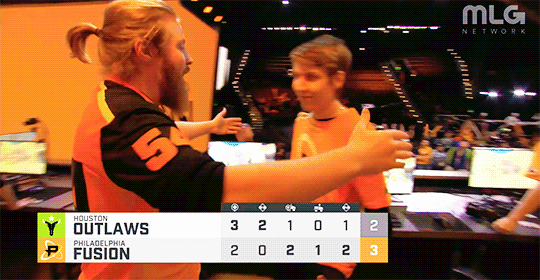
Esports or ‘electronic sports’ refers to the “collective term used to describe competitive gaming at a professional level” (James, 2020). Competitors from different leagues or teams verse each other in games including Fortnite, League of Legends, Call of Duty and Counter-Strike, and these events and “gamers are watched and followed by millions of fans all over the world, who attend live events or tune in on TV or online” (Willingham, 2018).
Streaming media to broadcast competitive play has become a consistently growing industry, with platforms like Twitch and YouTube Gaming allowing viewers to watch their favourite gamers live in real time, or through playback, and this is generally where gamers build their social communities and fandoms. Twitchin particular, was initially dedicated to gaming upon its arrival, yet has now also gained popularity with other genres, including talk shows and cooking show streams. “By 2017, the site boasted [over] 2.2 million unique broadcasters per month with [over] 17,000 members in the Twitch Partner Program and 110,000 creators in the Affiliates Program” (Taylor, 2018) with also 10 million daily active users (Twitch 2017b, 2017c).
Live streaming has turned into an amazing opportunity for professional “esports players and teams to build their audience, brand, and incomes” (Taylor, 2018) all whilst streaming straight out of their bedrooms. However, this industry has also benefitted the fans, as they are now easily able to tune in online to watch the live streams globally, transforming the industry into an extremely lucrative and interactive social community, that was once seen purely as a ‘hobby’ or activity to pass the time, but is now seen as a potential full-time career. Especially when NewZoo’s (2016) research (cited in Willingham, 2018) found that “brand investment in esports reached $325 million dollars in 2016” and is positively progressing.
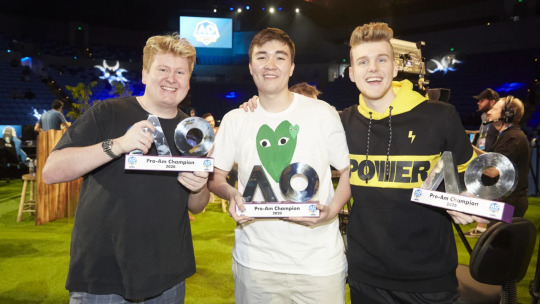
Harley 'Fresh' Fresh, pictured centre. Image: Tennis Australia.
“Gaming is super international, and I think brands keep forgetting that some of the biggest names in gaming worldwide are actually Australian” (Fresh, 2020). One of the world’s biggest Fortnite streamers is 18-year-old Australian, Harley Fresh, who has accumulated over 9 million subscribers across YouTubeand Twitch, and regularly receives between 1.5 to 3 million views per video, which led to an exclusive streaming contract between Fresh and Twitch. He believes that viewers enjoy watching Australians, as their humour and accents differ from the rest of the world and that esports is growing rapidly in Australia. This is a great chance for Australians to gain exposure and possibly secure, what some would call, a dream career in gaming.
References:
James, F 2020, “What is esports? A beginner’s guide to competitive gaming,” gamesradar, GamesRadar+, viewed 30 April, 2021, <https://www.gamesradar.com/au/what-is-esports/>.
Taylor, T.L 2018, Watch Me Play: Twitch and the Rise of Game Live Streaming, Broadcasting Ourselves, Princeton University Press, pp. 1-23
Willingham, AJ, CNN 2018, “eSports business is booming,” CNN, viewed 30 April, 2021, <https://edition.cnn.com/2018/08/27/us/esports-what-is-video-game-professional-league-madden-trnd/index.html>.
Walker, A 2020, “Australia’s Biggest Fortnite Streamer Just Nabbed An Exclusive Twitch Deal,” Kotaku Australia, viewed 30 April, 2021, <https://www.kotaku.com.au/2020/09/twitch-fresh-mrfreshasian-signs-contract-extension-interview/>.
1 note
·
View note
Text
Week 7: Face Filters

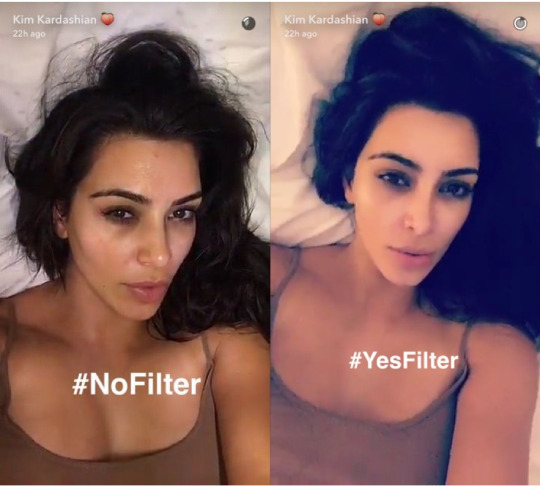
It is no surprise that beauty or face filters have become a norm when scrolling through social media sites such as Instagram or Facebook, and with the pandemic lockdown in 2020, this has only amplified screen time online. Face filters apply “virtual accessories and modify facial features, enabling users to incorporate augmented reality into their daily practice” (Barker 2017). Although, many face filters can be fun and entertaining and used in a positive and comical sense, society is beginning to see more beautification edits using apps like Facetune, which are becoming detrimental to our self-confidence and mental health.
An interesting quote pulled from a Women’s Health article (Rodulfo 2020) by 21-year-old Alec Bayot stated that:
The ‘Instagram face’ def makes me think of getting lip fillers… it’s crazy how much it makes me rethink my appearance.
Bayot also used the words “digital Play-Doh” to describe how editing apps allow users to mold, pinch and add volume to wherever they desire, and this process, despite seeming harmless in the beginning, can easily spiral into obsessive tendencies. “Nowadays women not only feel pressured to compete with socially generated beauty standards, but to compete with their own image too…to attain the unattainable” (Coy-Dibley 2015, p. 2). According to Leon Festinger’s social comparison theory (1954), “when unable to evaluate ourselves directly, we seek to satisfy this need for self-evaluation through comparison with other people” (Grogan, 2008: 118) and this, paired with the heavy use of face filters may lead to the manifestation of digitised dysmorphia. Coy-Dibley (2015, p. 2) defines that digitised dysmorphia is “shaped collectively by societal pressures, constructs of beauty and the technology presently available to attain these standards.”
Whilst scrolling through Facebook this week, I came across a video uploaded by VICE Lifethat highlights this concept of digitised dysmorphia through face filters. I found it very interesting that “previously, patients would bring images of celebrities to their consultations... [however, now they are] seeking out cosmetic surgery to look like filtered versions of themselves” (Rajanala et al. 2018). Overall, beauty filters have contributed to digitised dysmorphia over time by placing an unattainable pressure upon society and particularly women, to look a certain way in order to conform to today’s beauty standards. Although, this is the sad reality, I don’t think face filters will be seeing a decline in user participation anytime soon.
Here is the link to the VICE Life video below:
https://www.youtube.com/watch?v=5ZOpLpSNW6c
References:
Barker, J 2020, ‘Making-up on mobile: The pretty filters and ugly implications of Snapchat’, Intellect Limited, vol. 7, no. 2 & 3, pp. 207-221.
Coy-Dibley, I 2016, ‘Digitised dysmorphia of the femalebody: the re/disfigurement of the image’, Palgrave Communications, 2:16040 doi: 10.1057/palcomms.2016.40.
Rodulfo, K 2020, “It’s Easier Than Ever To Make A New Face On Social Media. But Is It Killing Your Confidence?,” Women’s Health, Women’s Health, viewed 23 April, 2021, <https://www.womenshealthmag.com/beauty/a33264141/face-filters-mental-health-effect/>.
Susruthi Rajanala, Maymone, MBC & Neelam Vashi 2018, “Selfies—Living in the Era of Filtered Photographs,” ResearchGate, American Medical Association, viewed 23 April, 2021, <https://www.researchgate.net/publication/326796822_Selfies-Living_in_the_Era_of_Filtered_Photographs>.
VICE Life 2018, “I Got Surgery to Look Like My Snapchat and Facetune Selfies,” YouTube, viewed 23 April, 2021, <https://www.youtube.com/watch?v=5ZOpLpSNW6c>.
#mda2000921#digitalcommunities#facefilters#instagram#snapchat#dysmorphia#social media#beauty#kardashians
1 note
·
View note
Text
I found that this post heavily relates to the topic of 'Body Modification on Visual Social Media' as Instagram and other social media platforms have almost normalised the concept of the 'Insta Baddie' look, ultimately making cosmetic surgery seem more appealing and even necessary to those who become obsessed with this fake standard of beauty.




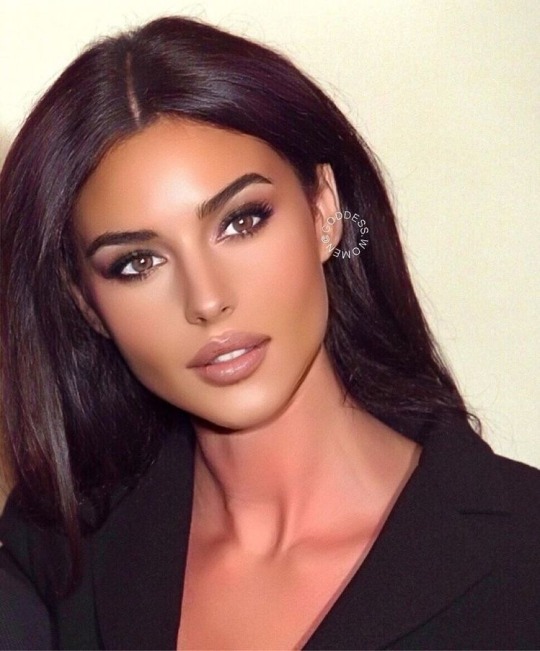

the way instagram has rotted peoples brain to the point where they do these weird ”baddiefication” edits to every beautiful female celebrity bc they have been so brainwashed into believing all women should have no skin texture at all and photoshopped lip filler that they want to alter and morph all women into this weird instagram default character like we live in imvu
1K notes
·
View notes
Text
Week 6: Body Modification on Visual Social Media
This week’s topic centres around body modification on visual social media and how the need to improve one’s appearance has increased overwhelmingly in popularity. In this post I will be using the social media platform Instagram as an example, as it is a uniquely visual social media channel and is “naturally suited to plastic surgery” (Dorfman et al. 2018, pp. 332). Many celebrities have gotten aesthetic cosmetic surgery before and some even promote it on their social media sites, with the Kardashians and in particular, Kylie Jenner being heavily speculated to have had a Brazilian butt life or implants and her iconic lip fillers. However, due to the explosion of user-generated content online, this has resulted in a plethora of influencers referred to as ‘microcelebrities.’ These microcelebrities use a style of online performance in which individuals attempt to “gain the attention of a ‘following’ on social media through representations of their everyday lives” (Drenten et al. 2020, pp. 42). These ‘representations’ are often unrealistic highlight reels of the user’s life and since “influencer marketing on social media is now a multi-billion-dollar industry, expected to be valued between $5-10 billion by 2020” (MediaKix, 2018) social media influencers now have more power than ever over users and importantly, the younger generation.


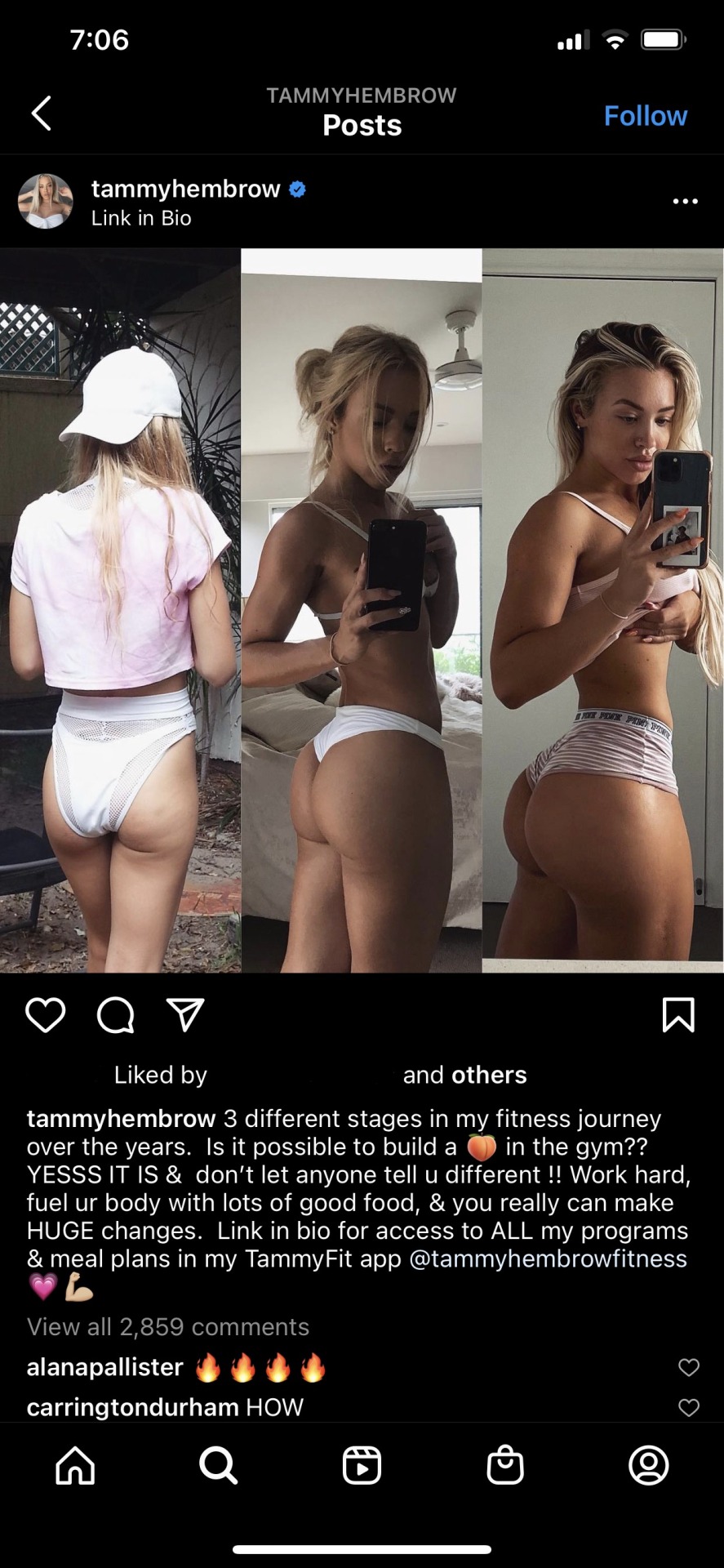
After fending off rumours about aesthetic/cosmetic surgery, 26-year-old Australian influencer, Tammy Hembrow, admitted in her Q&A on her YouTube Channel to getting breast augmentation after giving birth to her daughter. She stated that she had gotten the surgery after she stopped breastfeeding her daughter, Sass, as she said “it sucked the life out of [her] boobs” and that “they were just little saggy pieces of skin after” (Tammy Hembrow, 2020) and wanted to undergo it for herself. Despite Tammy openly posting photos of her new boob job, she also has her own TammyFit workout programs and meal plans to promote growing a natural booty by proving this to her followers with her personal ‘before and after’ photos. Even though the constant exposure and normalisation of plastic surgery on social media can be damaging to youth’s mental health over time, I feel that influencers who are open about their surgery and those who also encourage working towards achieving your body goals naturally can have a positive impact on educating others about the risks and benefits of cosmetic surgery.
Here is a link to Tammy Hembrow’s Q&A YouTube video. Skip to 6:03 to watch her addressing her breast augmentation surgery:
https://www.youtube.com/watch?v=IygC9gzUx3U&t=731s
References:
Dorfman, R, Vaca, E, Mahmood E, Fine, N, Schierle, C 2018, ‘Plastic Surgery-Related Hashtag Utilization on Instagram: Implications for Education and Marketing’, Aesthetic Surgery Journal, vol. 38, no. 3, pp. 332-338
Drenten, J, Gurrieri, L, Tyler, M 2020, ‘Sexualised labour in digital culture: Instagram influencers, porn chic and the monetization of attention’, Gender Work Organ, 2020;27:41-66, <https://doi.org/10.1111/gwao.12354>
Mastroianni, B 2020, “Influencer admits to plastic surgery,” Sunshine Coast Daily, viewed 16 April, 2021, <https://www.sunshinecoastdaily.com.au/news/influencer-admits-to-plastic-surgery/4106344/>.
#mda2000921#bodymodification#breastsurgery#tammyhembrow#cosmeticsurgery#instagram#social media#influencer#microcelebrity#digitalcommunities
4 notes
·
View notes
Photo
This shows how the #MeToo movement has impacted many girls and women around the world and how it's addressing an important issue that many of us go through, sometimes without even realising it.

2K notes
·
View notes
Text
Digital Citizenship: Hashtag Publics, Political Engagement and Activism - Week 5
This week explores the shift in political engagement and addresses how digital citizenship has allowed online users to engage in politics and express their points of view in unique, unconventional ways through hashtags and activism.
In recent decades, “there has been a membership decline in many traditional, collective action-oriented organisations such as political parties and trade unions” (Vromen 2017). However, there has been an increase in citizens’ involvement with local community, environmental, human rights and online social movements that have sparked a change in the values of society and politics. Digital Citizenship is defined as “the potential to benefit society as a whole and facilitate the membership and participation of individuals within society” (Mossberger et al. 2008:1). A good digital citizen has the skills and knowledge to effectively use digital technologies in a positive way to communicate with others and this is becoming more common in today’s digitally advanced generation.
A controversial case study that draws on this concept is the 2016 U.S Presidential Election Campaign between democratic candidate, Hilary Clinton and republican candidate, Donald Trump. “Social media platforms were increasingly used as direct sources of news, bypassing the editorial media” (Enli, 2017) and became a dominant source for mass communication among television and newspapers. In 2016, British political consulting firm, Cambridge Analytica, improperly obtained access to more than 50 million Facebook user profiles and used this to gain an unfair advantage in targeting voters to vote for Donald Trump in the election. Many sources have confirmed this, and Trump’s win demonstrates just how powerful social media can be for political engagement.
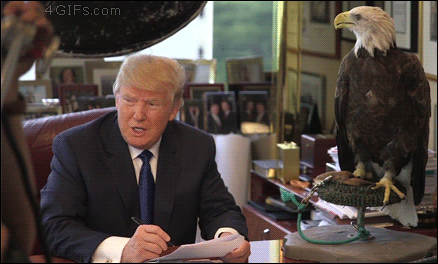
Another significant tool that contributes to digital citizenship are hashtags, which are commonly used on Facebook and Twitter and facilitate connectivity through themes, keyword markers and events. Some examples include #AusPol or the #MeToo movement which is a social movement where people publicize their stories against sexual abuse and harassment in a form of activism. I believe that social media and people becoming increasingly good digital citizens, have allowed us as a society to empower each other and communicate more effectively towards expressing our own voices.

#mda2000921#digitalcommunities#donald trump#digital citizenship#activism#politics#political engagement
0 notes
Text
Digital Community and Fandom: Reality TV – Week 4
Today’s discussion centres around Reality TV and how it triggers everyday political talk in the public sphere. Reality TV is defined as “ordinary people engaged in unscripted action and interaction” (Nabi, 2007) and is a broad genre that includes gamedocs, dating programs, makeover/lifestyle, talent contests and many more. Although, Reality TV consistently wins ratings, there is a paradox with audiences as those who were surveyed about their viewing habits often said that Reality TV is their least favourite entertainment genre, with 61% of people wishing there was less Reality TV (Statista).
Despite this, Graham and Hajru (2011, p.20) state that “everyday political talk and those spaces that provoke and foster such talk become crucial to maintaining an active and effective citizenry specifically the public sphere” and that Reality TV fits into this by contributing to informal conversations on the web. This participation is important as it is believed to “increase our civic competence and adds to our knowledge and skills needed for democratic action” (Graham & Hajru 2011, p.21).
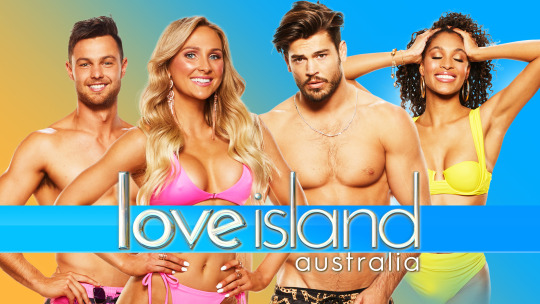
An example of a Reality TV dating show that ignites political and personal discussion very well is ‘Love Island’ where contestants spend 8 weeks in a villa in Spain. Producers of the show tend to select diverse contestants which tend to have contrasting lifestyles with the aim to create a ‘lively’ series for the audience. We can all agree that we have watched and even been entertained by Reality TV at least once in our lives, however findings suggest that “celebrity news does more than just entertain” (Graham & Hajru 2011, p.28) and actually extends the public sphere. Love Island has pushed boundaries of this participatory culture by encouraging multi-platform consumption, which has brought fan communities together. Love Island embracing the “merging of television broadcasting with social media demands” (L’Hoiry, 2019) gives audiences more opportunities to discuss topics in the show with one another both online and in-person. With today’s generation and technology, people are able to easily share their thoughts and this participatory culture has even caused people to question the authenticity of Reality TV.
What do you think about Reality TV and do you find yourself watching it?
References:
L'Hoiry, X. 📷 (2019) 'Love Island, social media, and sousveillance : new pathways of challenging realism in reality TV'. Frontiers in Sociology, 4. 59: https://doi.org/10.3389/fsoc.2019.00059
Todd Graham and Auli Hajru Reality TV as a trigger of everyday political talk in the net-based public sphere 📷 download, European Journal of Communication 26(1) 18–32, 2011.
0 notes
Text
How does Tumblr function as a digital community? - Week 3
“Social media platforms are popular sites, attracting millions of users who connect digitally” (Kruse et al. 2018) and similar to platforms like Instagram and Twitter, Tumblr allows its users to create unique social and political communities. Tumblr was created by the then 21-year-old David Karp in 2007, with the purpose of being an easy multimedia microblogging social media platform. Tumblr gives its users flexibility when it comes to personalising the design of their blog, using images, memes, GIF animations, videos, text and more, which is why Tumblr is considered “an alternative world, where disparate people come together over mutual passions and desires” (McCracken 2020, pp. 2-3).
What differentiates Tumblr from many other social media platforms is its “liberal/progressive branding and its reliance on pseudonymity” (McCracken 2020, pp. 3-4). This has allowed Tumblr to welcome marginalised groups of society, including youth, LGBTQ and nonbinary persons, people of colour, feminists or those who do not conform to society’s ideals. Keller explores this in her research and argues that “teenage girls strategically choose how to engage with feminist politics online, carefully weighing issues like privacy, community, and peer support” (2019, pp. 1) as factors that influence which platform that they engage with. In her study, 19-year-old Marlo described Facebook as a more “conservative platform…where you share news about family” (2019, pp.1) indicating that platform vernaculars are significant when establishing and maintaining digital communities.
Tumblr’s flexible profiles often structured around pseudonyms rather than ‘real world’ identities, allows users to “experiment with marginalised identities they may want to keep private, while easily connecting to likeminded” (Keller 2020, pp. 5) individuals. An example of a digital community that fosters this is feminist politics. Many girls and women use Tumblr to share their personal experiences about topics including sexual harassment, misogyny and rape to raise awareness and develop a public voice, that would otherwise be difficult in the real world without anonymity. Thus, Tumblr provides its digital community with a sense of comfort and freedom to express their thoughts without judgement from family and friends.
----
References:
Allison McCracken, Chapter 3 ‘Going Down the Rabbit Hole: An Interview with Amanda Brennan, Head of Content Insights and Social, Tumblr’ in a tumblr book: platform and cultures eds Allison McCracken, Alexander Cho, Louisa Stein, and Indira Neill Hoch (University of Michigan Press: 2020) https://doi.org/10.3998/mpub.11537055
Jessalynn Keller, “Oh, She’s a Tumblr Feminist”: Exploring the Platform Vernacular of Girls’ Social Media Feminisms📷, Social Media + Society Volume: 5 issue: 3, 2019.
Kruse, LM Norris, DR & Flinchum, JR 2018 Social media as a public sphere? Politics on social media📷, The Sociological Quarterly, 59:1, 62-84
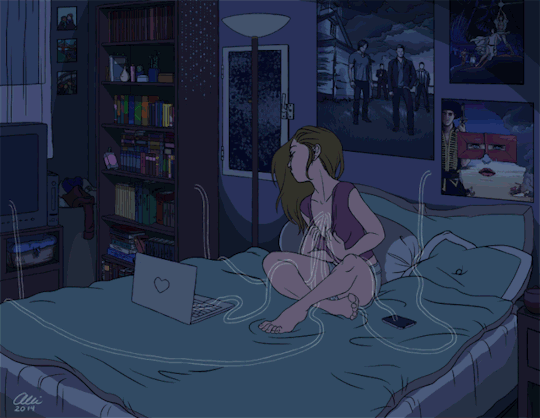
2 notes
·
View notes